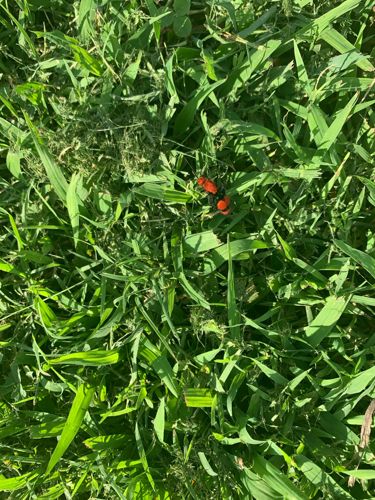Red-shouldered Blister Beetle
Scientific Name: Lytta vulnerata (though Lytta magister and Lytta aenea are other common red-black blister beetles, 'vulnerata' fits the described pattern well, and 'magister' is often larger and more desert-dwelling). A more accurate general identification without closer inspection is simply 'Blister Beetle' (Family Meloidae).
Order & Family: Order Coleoptera, Family Meloidae
Size: Typically 1 to 3 cm (0.4 to 1.2 inches) in length, depending on the species.

Natural Habitat
Found in various habitats, including grasslands, gardens, agricultural fields, and areas with flowering plants where they can find pollen and nectar, or host plants for their larvae. Often seen on various flowering forbs and legumes.
Diet & Feeding
Adult blister beetles are primarily herbivorous, feeding on pollen, nectar, and the leaves of a variety of plants, such as alfalfa, potatoes, tomatoes, and various weeds. Larvae of many species are parasitic on the eggs of ground-nesting bees or on grasshopper egg pods.
Behavior Patterns
Blister beetles are known to secrete cantharidin, a toxic defensive chemical that can cause blistering of the skin upon contact. They often gather in groups on host plants. Their life cycle typically involves hypermetamorphosis, where larvae go through several distinct forms. Adults are active during the day.
Risks & Benefits
Potential risks include direct contact with skin, which can cause painful blisters due to cantharidin. If ingested by livestock, especially horses, even a small number of beetles can be lethal. From an ecological perspective, their larvae can be beneficial by preying on grasshopper eggs, thus helping to control grasshopper populations. However, adult feeding on crops can be detrimental to agriculture.
Identified on: 10/7/2025